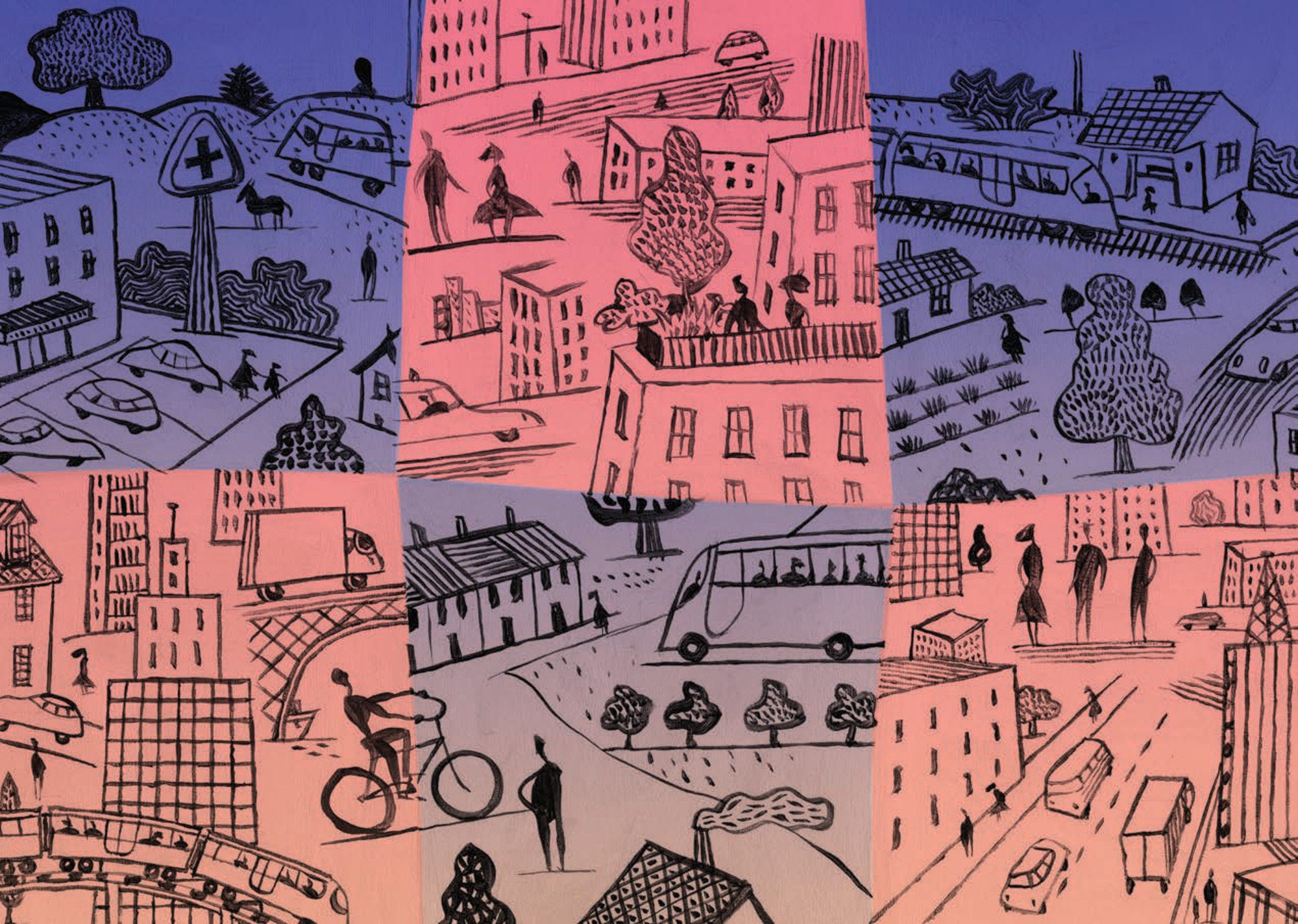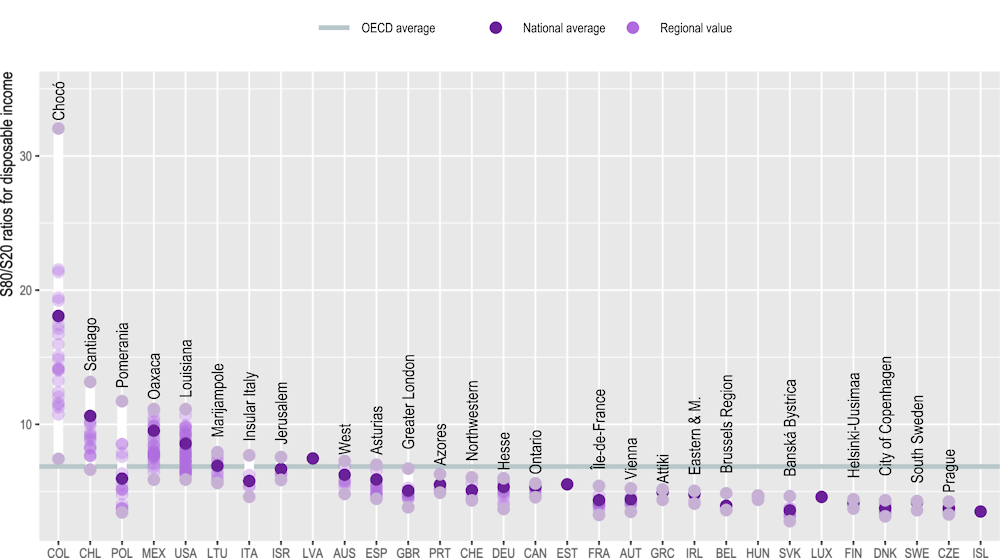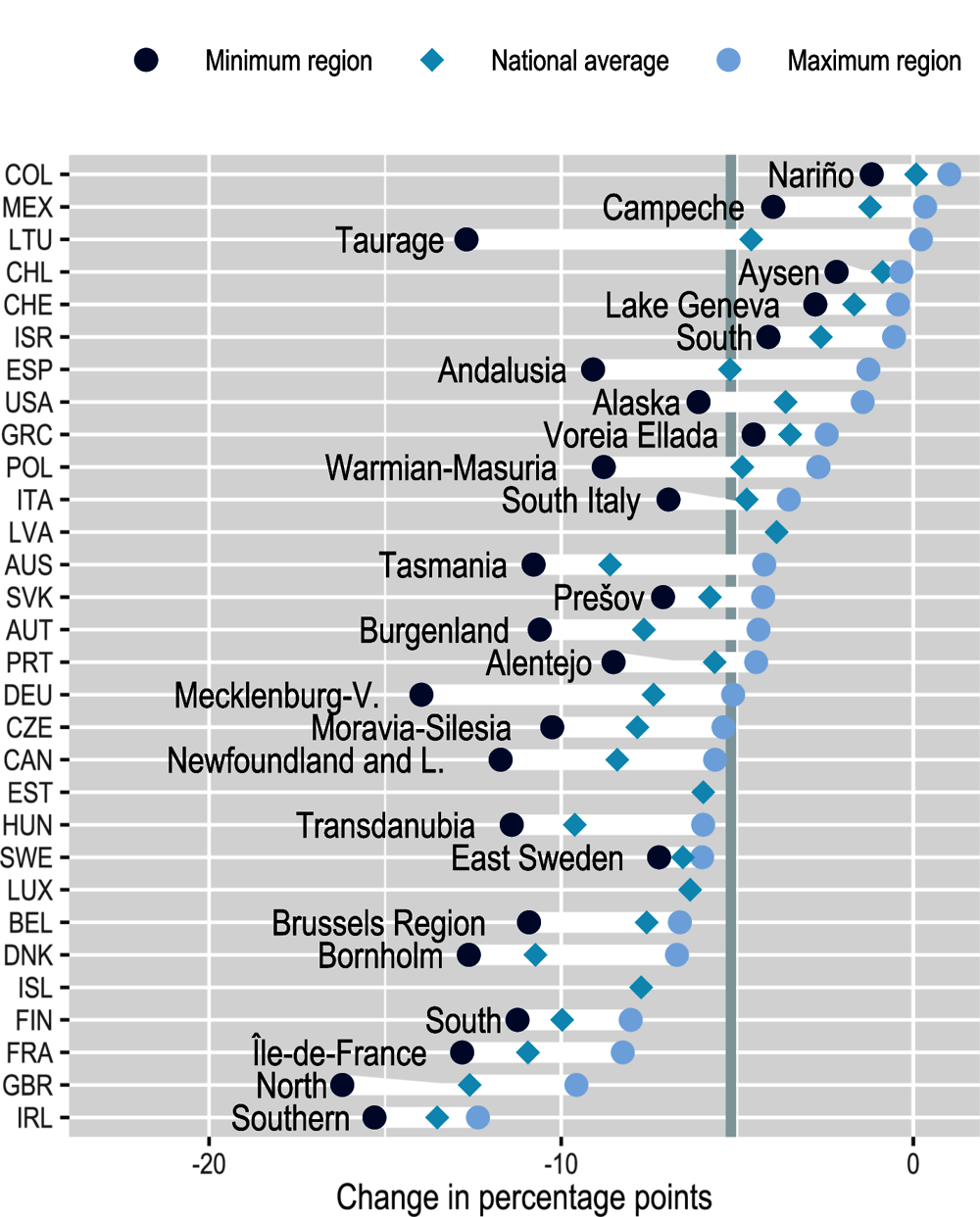Income inequalities are the highest in capitals and less developed regions. In those places, the disposable income of the richest 20% is around 7 times higher than that of the poorest 20%.
Highly unequal societies can stifle opportunities for people and make places more vulnerable to crises. At the individual level, low incomes deteriorate quality of life, long-term economic prospects and the capacity to prevent and respond to risks. At the regional level, stark inequality generates discontent and mistrust, which undermines social cohesion (Rodríguez-Pose, 2018) and limits the capacity to cope with shocks. During the outbreak of COVID-19, higher income inequality and deprivation were associated with higher COVID‑19 mortality within regions and cities (Brandily et al., 2021; Iacobucci, 2020).
Income inequalities are stark and persistent within regions. In 2020, capital-city regions and some less developed regions (based on gross domestic product [GDP] per capita) exhibited the highest income inequalities, as measured in terms of the ratio between the 20% richest and 20% poorest population’s disposable income (an indicator also known as the S80/S20 ratio for disposable income). In half of the 26 OECD countries with available data, capital‑city regions presented among the highest S80/S20 ratios for disposable income. In Santiago (Chile), Warsaw (Poland) and Greater London (UK), the disposable income of the richest 20% of the population ranged from 7 to 13 times that of the poorest 20% of the population. However, in other countries such as Colombia, the Czech Republic, Lithuania and Mexico, the relatively less developed regions are the ones with the highest inequalities (Figure 4.4). Although inequality levels (S80/S20 ratios) can be similar between capital regions and less developed regions, average incomes – especially those of the bottom 20% – are higher in capital regions.
Regional disparities are also large and persistent in terms of poverty rates. The relative poverty rate across OECD regions was around 21% in 2020. The average gap in poverty rates between the worst- and best-performing regions in the same country amounted to 18 pp. The largest differences were in Colombia and Mexico (50 pp or more). In Europe, differences were largest in Belgium, Italy and Spain (20 pp or more) (Figure 4.5).
Within OECD regions, top-to-bottom income inequality has slightly increased during the last decade, while relative poverty rates have remained the same. In most regions, the increase in S80/S20 ratios is due to faster growth in the average incomes of the richest population (15% increase) compared to the poorest (12.5% increase). On the other hand, relative poverty rates (the share of the population with an income below 60% of the national median income) have remained at 21%, on average, in the same period (due to a similar growth between bottom and median incomes). However, in 42 out of 306 OECD regions, relative poverty rates increased by 4 pp or more, including some regions in Colombia, France, Lithuania, Spain and the United States (US).
In 2020, taxes and transfers contributed to significant reductions in inequalities in gross income. They reduced regional S80/S20 ratios for gross income by 36% and regional relative poverty rates for gross income by 21%, on average across OECD regions. Yet, regional differences in this indicator suggest that some places are still not exploiting the full potential of redistributive policies. In 15% of OECD regions, taxes and transfers did not lead to significant reductions in S80/S20 ratios and poverty rates (Figure 4.6).



